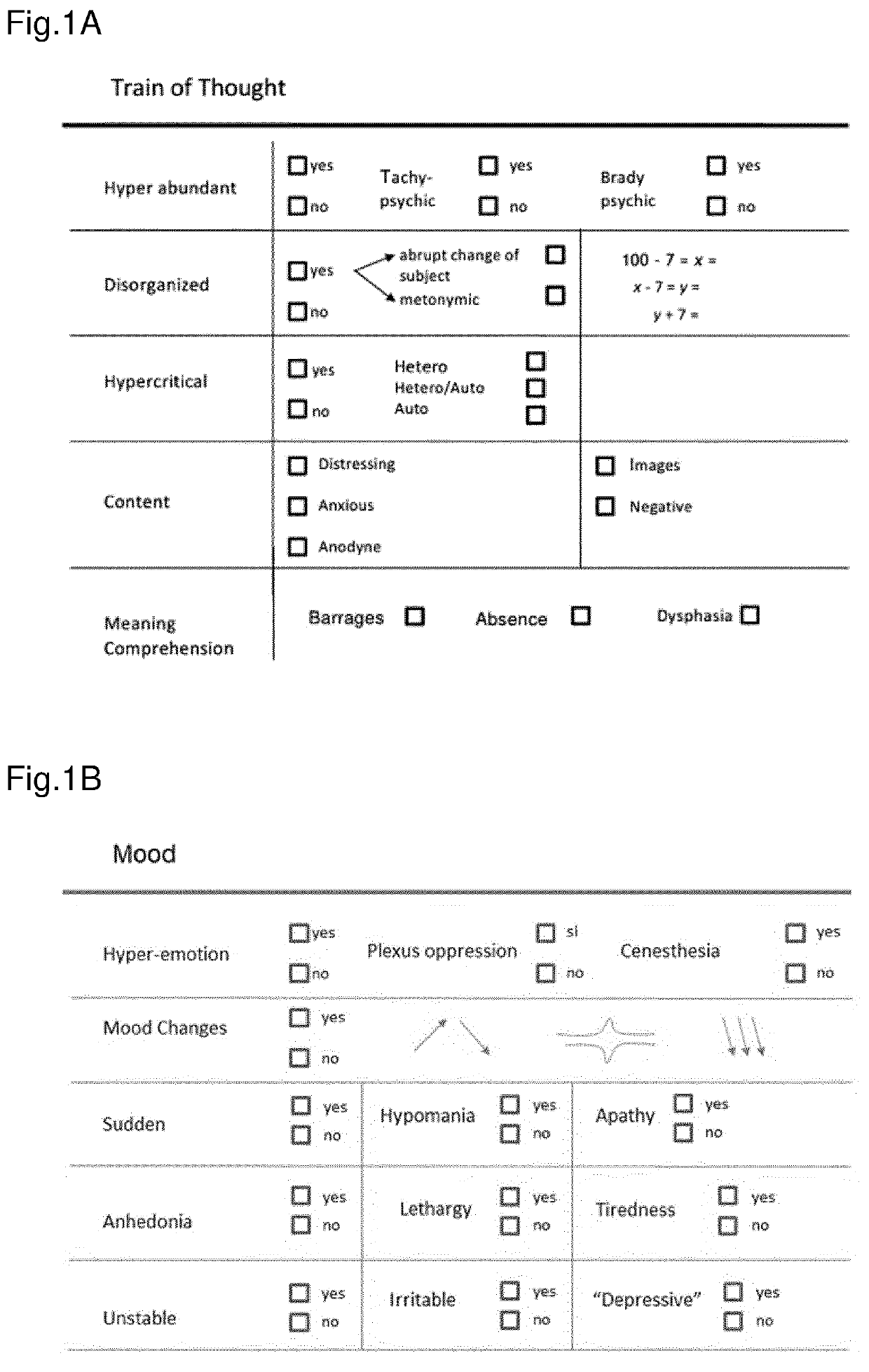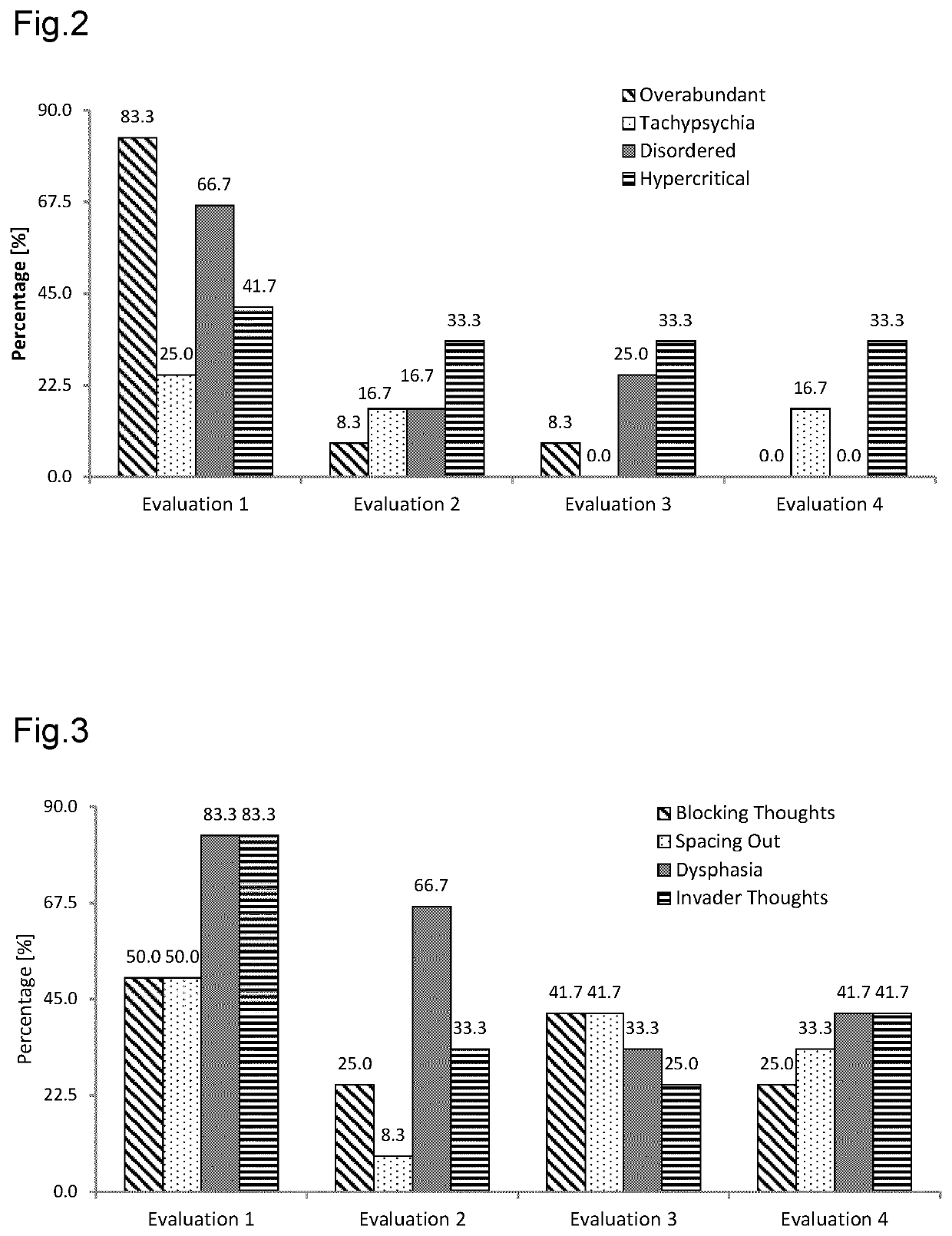Lacosamide for the Treatment of ADD/ADHD
a technology applied in the field of add and adhd treatment, can solve the problem that stimulants do not provide a suitable long-term treatment solution, and achieve the effect of reducing the risk of side effects and improving the quality of li
- Summary
- Abstract
- Description
- Claims
- Application Information
AI Technical Summary
Benefits of technology
Problems solved by technology
Method used
Image
Examples
case study 1
Example 1: Case Study 1
[0210]Overview
[0211]ADD and ADHD have been accepted as a very frequent and highly represented syndrome in childhood neuropsychological developmental troubles. The origin of this trouble has not been identified. Hypothesis about its etiology are deficit in dopamine production / firing and / or deficit in noradrenaline production / firing. As a consequence, stimulation by very active enhancers of neuronal activity (mainly methylphenidate but more recently others) is the conventional treatment for ADD / ADHD.
[0212]Conventional treatments such as methylphenidate and other forms of major and general brain stimulators mask the most overwhelming part of ADD / ADHD symptomatology and certainly do not modify the origin of the trouble. Moreover, the utilization of these powerful stimulants of the central nervous system usually, in mid and long term application, leads to a decline in their efficacy and simultaneous arousal of a number of neuropsychological symptoms (stereotypes, p...
example 2 — case study 2
Example 2—Case Study 2
[0266]We conducted a second case study to validate earlier results of Case Study 1. The patient was a 17 year old male suffering from ADHD (with no comorbidity such as epilepsy or bipolar disorder). The patient was treated with a lacosamide mono-therapy for several weeks based on the conventional treatment regime for lacosamide (for the treatment of epilepsy and / or bipolar disorder) for subjects weighting 50 kg or more.
[0267]Similarly to Case Study 1, we observed that ADHD symptomatology slowly regressed in the patient, with a significant improvement in patient's cognitive functionality.
example 3 — case study 3
Example 3—Case Study 3—Large Study Group
[0268]Importance
[0269]The aim of the study is to identify the viability and effectiveness of lacosamide in the treatment of symptoms of ADHD. Lacosamide is believed to work without stimulation and artificial modification of the concentration of neuro mediators. Instead, the compound works exclusively on the stabilisation of the ionic passage (Sodium, Potassium) through the neuronal membrane.
[0270]Several studies have demonstrated the effectiveness of methylphenidate and other neuro-stimulants in the treatment of ADHD. However, little is known about the effect of non-stimulating molecules, such as lacosamide, on the alleviation of symptoms associated with ADHD.
[0271]Objective
[0272]The present study is a series of cases in a group of children and adolescents with behavioural troubles, dysfunctional learning disabilities and ADHD syndrome, who have been treated using lacosamide and evaluated over the period of six months.
[0273]Methods
[0274]This s...
PUM
| Property | Measurement | Unit |
|---|---|---|
| weight | aaaaa | aaaaa |
| time | aaaaa | aaaaa |
| time | aaaaa | aaaaa |
Abstract
Description
Claims
Application Information
 Login to View More
Login to View More - R&D
- Intellectual Property
- Life Sciences
- Materials
- Tech Scout
- Unparalleled Data Quality
- Higher Quality Content
- 60% Fewer Hallucinations
Browse by: Latest US Patents, China's latest patents, Technical Efficacy Thesaurus, Application Domain, Technology Topic, Popular Technical Reports.
© 2025 PatSnap. All rights reserved.Legal|Privacy policy|Modern Slavery Act Transparency Statement|Sitemap|About US| Contact US: help@patsnap.com



